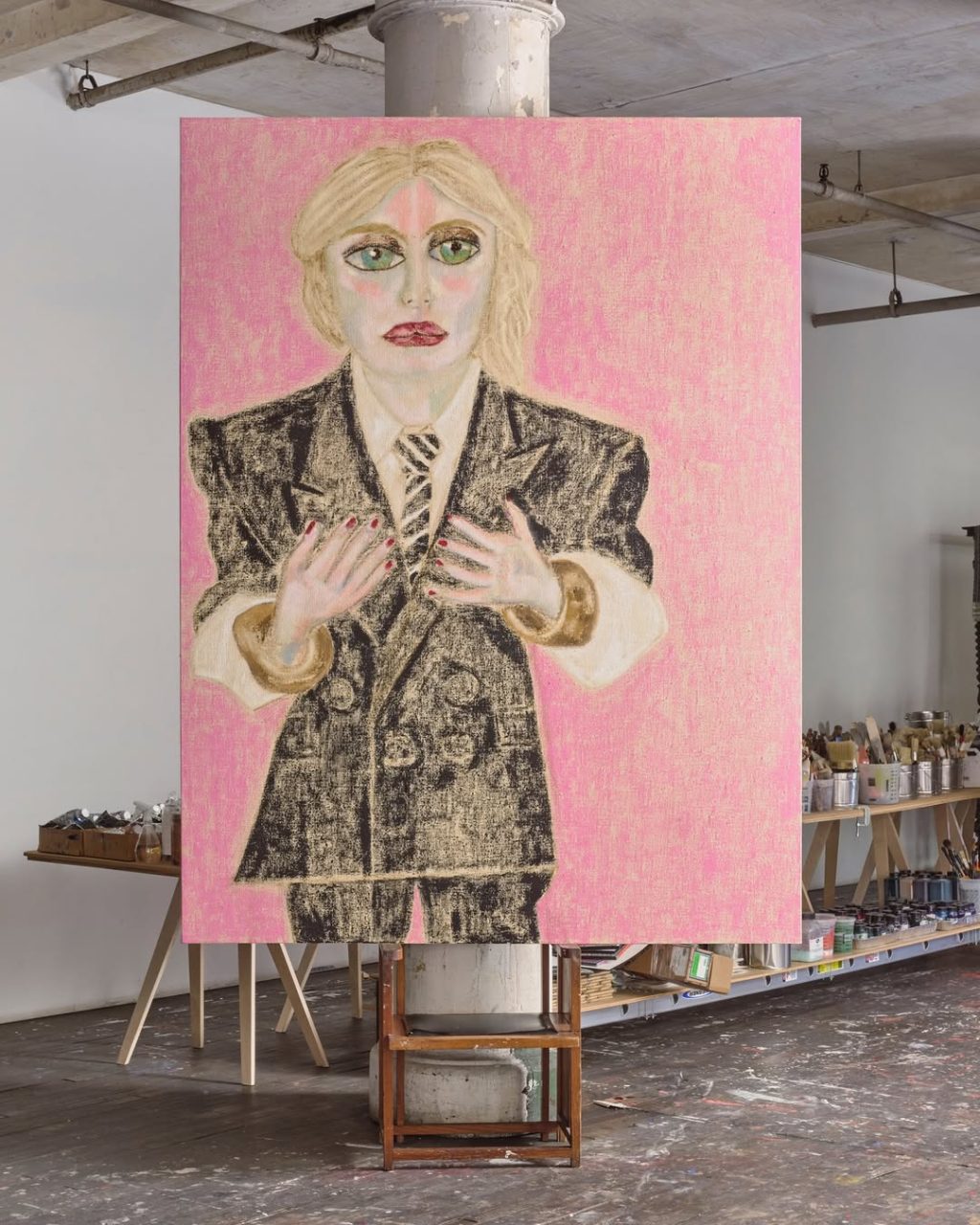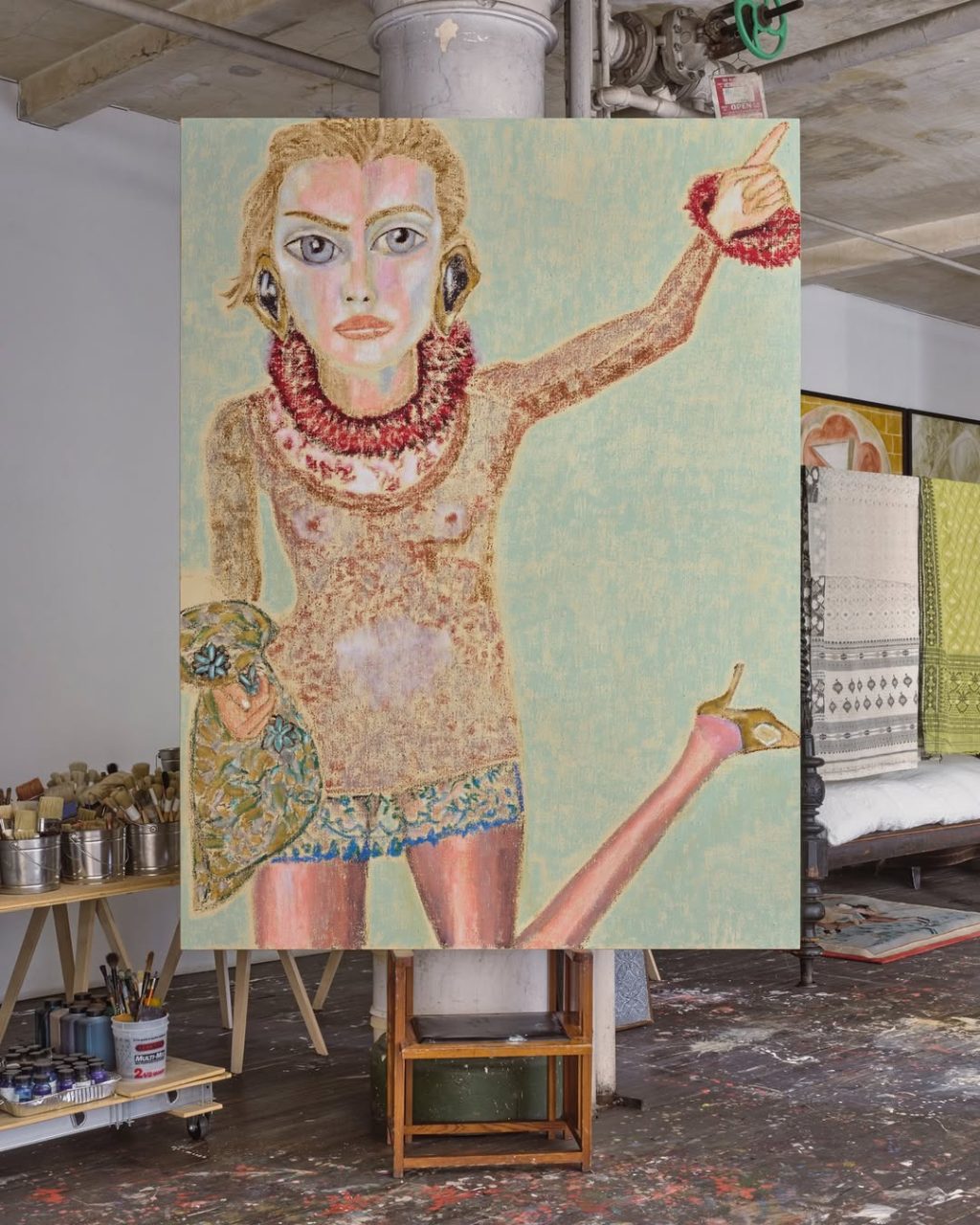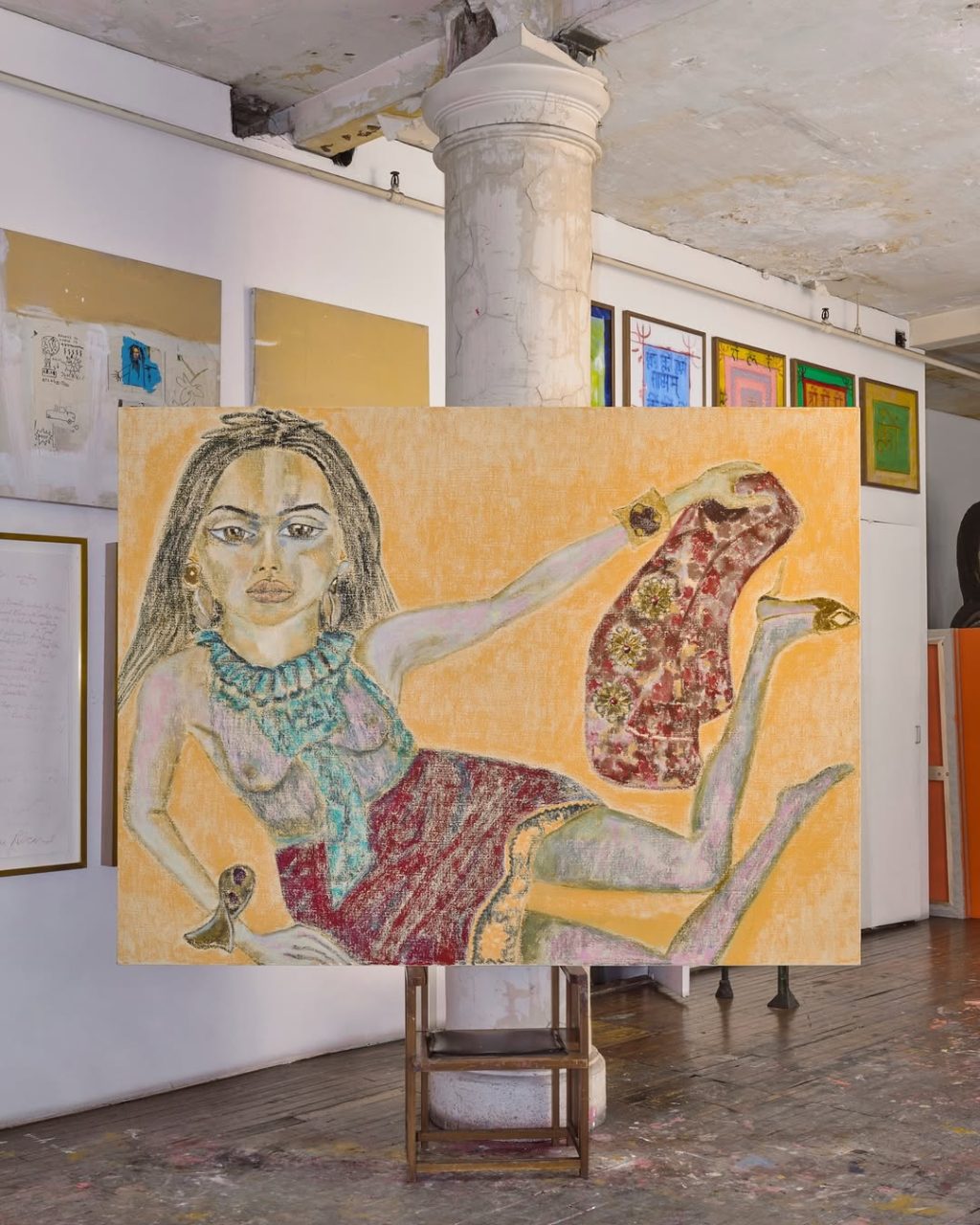SAINT LAURENT SUMMER 2025: CLOTHES AS PORTRAIT, MEMORY AS FORM
Saint Laurent’s Spring/Summer 2025 campaign does not unfold on a runway or through the lens of a camera—it arrives by brushstroke. Under the direction of Anthony Vaccarello, the French house turns to celebrated painter Francesco Clemente, inviting him to interpret the season’s collection not as fashion imagery, but as fine art.


The resulting portraits do more than depict clothes—they suggest personas. Zoë Kravitz, Isabella Ferrari, Penelope Ternes, and Ajus Samuel appear not as models, but as characters suspended in color, softness, and form. Clemente’s canvases bypass the need for definition; each subject is rendered with the intimacy of a memory and the composure of mythology.
This is not Saint Laurent referencing art—it is Saint Laurent becoming it. With a nod to the brand’s painterly lineage, from Yves Saint Laurent’s Van Gogh-inspired collection in 1988 to Vaccarello’s current cultural projects, the campaign bridges decades of creative instinct. Clemente’s work continues that dialogue, echoing the house’s mid-’80s boldness while softening it with his own visual vocabulary.
On canvas, brocade jackets, lace blouses, and razor-sharp tailoring shift into new dimensions. These are not looks captured in motion, but garments distilled into essence. They carry sensuality without spectacle, structure without rigidity—clothing as aura.


The campaign functions as both a meditation and a mirror, capturing a moment in which Saint Laurent doesn’t just dress a woman but studies her. Through Clemente’s touch, the SS25 collection becomes something quieter, more reflective. A wardrobe rendered not for the archive, but for the imagination.
In a time where fashion imagery often leans toward immediacy and overload, this collaboration slows everything down. And in doing so, it leaves something behind—images that don’t just sell clothes, but suggest how it feels to inhabit them.